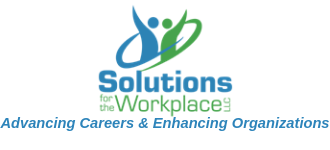We have talked about the importance of documenting your experience on your resume and through your cover letter. In addition to documenting your experience through achievements and metrics, another way to demonstrate your expertise and effectiveness is through third party endorsements. There are several ways to approach this:
- Consider featuring a quotation from a recent performance evaluation or award recommendation on your resume. On a USAJOBS resume, you could call it a Supervisory Endorsement and put it in the Additional Information Section of USAJOBS. Be sure to identify where the quote came from (e.g., Recent Performance Evaluation) and identify the source, either by name or title. Here’s an example:
“Branch Chief Smith is keenly versed on all laws, regulations and policies relevant to the program. He is working diligently to transform the operational paradigm from solely security to a frontline/investigative methodology…and to retool training…He is an expert on the science that distinguishes DHS’s program from all others, particularly in the area of guarding against cross contamination.” 2016 Performance Review.
This concept also works on private sector resumes; if you are creating a private sector resume, you may want to feature the quotation in a text box or something similar.
- Ask your LinkedIn Connections to prepare a Recommendation for you so when prospective employers look at your LinkedIn Profile, they will see your endorsements. Authentic, genuine Recommendations are powerful. Instead of sending out those presumptuous LinkedIn “Can You Endorse Me?” emails, select a handful of people in your network and write Recommendations for them, without asking for one in return. You will be surprised at how many people will reciprocate. You can also ask people if they would be willing to Recommend you and, if so, whether it would be helpful for you to do the first draft to get them started. If they take you up on your offer to do the first draft, make sure you let them know that they should feel free to edit what you have drafted. When drafting for someone, be specific and detailed. The reader should be able to tell exactly who it was written about. Quantify accomplishments (with percentages, numbers, and dollar amounts) as much as possible.
- Select and prepare your references. References should be professional, not personal. You will want to select 3-5 individuals to be your preferred references. These individuals may be current or former managers or supervisors, co-workers, peers, or team members, current or former customers of the company, vendors or suppliers, and people you have supervised. The best references can talk about your day-to-day job performance — so choose someone who supervised you or someone who worked with you closely. Select someone who knows your work well. You want someone who has seen you in action and can speak to your abilities. It’s better to have someone who can speak to your skills and accomplishments than a “big name” on your list of professional references. If someone seems hesitant to serve as your reference, ask someone else.
Once you’ve decided who you would like to be your references, always contact these individuals and ask their permission to use them as a reference. Call your references directly (don’t just email them). Not all potential references will be able to provide this kind of stellar recommendation. But some of your references may be hesitant to say no to you directly if you ask.
So you can give them a way to let themselves off the hook, without turning you down directly. Instead of asking, “Will you be a reference for me?” Ask them, “Do you feel you know me well enough to serve as a reference for me?” Or ask, “Will you be a great reference for me? (If the answer is anything less than enthusiastic, you can collect their information, but not list them on your reference list. It’s perfectly fine to ask a reference to support you, but then not use them when applying to certain jobs, or not at all.) Verify each reference’s contact information, including the preferred phone numbers (cell, home, work) to list.
Do NOT ask your references to pre-prepare written recommendations for you; most employers do not value these. Instead, let your references know that they may be contacted over the phone or via email. Immediately send a letter or email thanking them for serving as a reference, and provide a current copy of your resume (or let them know you will be sending them a copy of your resume soon, if it is not yet completed).
Once someone has agreed to be a reference for you, prepare a references page that you can provide to a prospective when asked. Do not put a section on your resume that says, “References Available Upon Request.” This is old fashioned and considered self-evident. Instead, you should have a reference page in the same format, font style, and font size of your resume. If you are using USAJOBS, it is not necessary to fill out the reference section unless the job posting requires that you provide references. Your Reference Page will work for both private sector and federal resume searches.
Using third party endorsements is a great way to differentiate you from other applicants. Each of these approaches add value to your job search.
